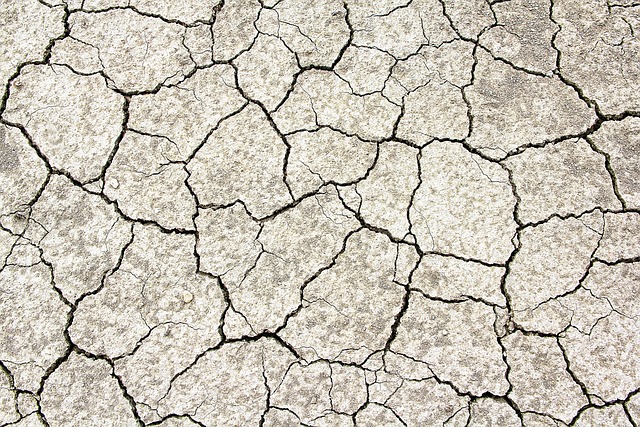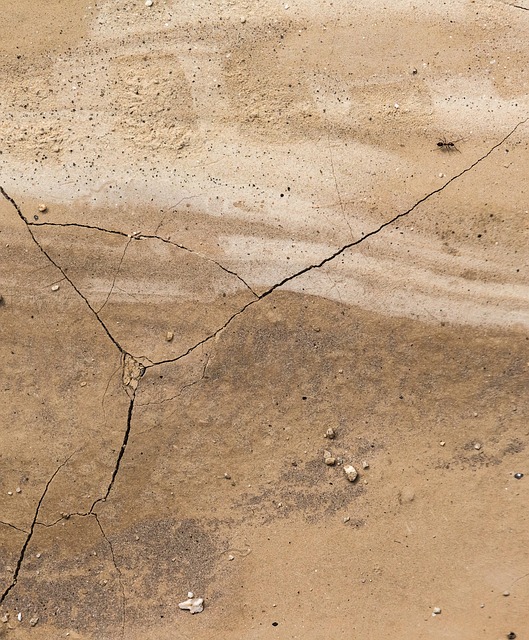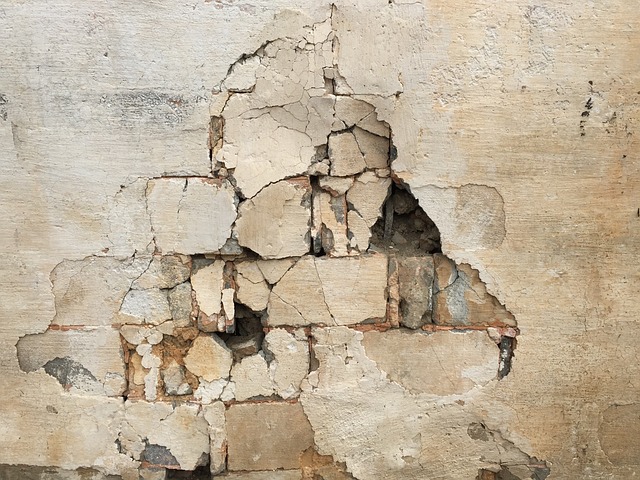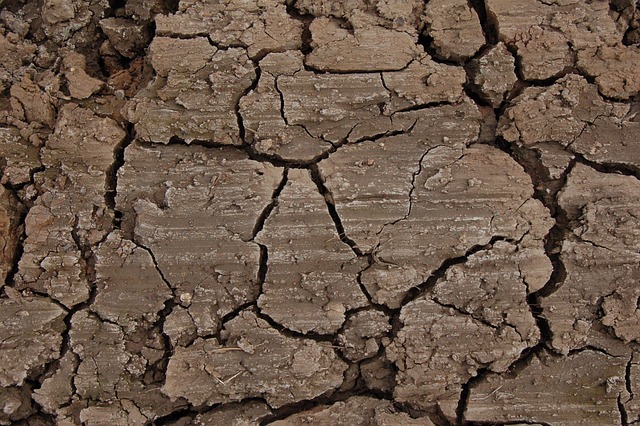Concrete cracks require prompt attention for structural integrity. Identifying crack types (hairline, diagonal, vertical) is crucial for choosing repair methods. Assessment techniques include visual inspections, sound testing, and radar scans. Repairs range from filling and sealing to replacement or reinforcement based on severity. Materials like epoxy injections, carbon fiber, and polymeric coatings ensure durable repairs. Best practices involve thorough inspection, tailored methods, surface prep, and post-repair monitoring. Regular maintenance, including drainage systems and protective coatings, prevents cracks and prolongs concrete structure lifespan.
Concrete structural repair is a crucial aspect of maintaining robust and safe buildings. This comprehensive guide delves into the intricacies of crack repair, addressing various aspects from understanding concrete cracks’ causes and types to assessing repair priorities. We explore multiple crack repair techniques, the materials involved, and provide a step-by-step process for effective repairs. Additionally, we discuss challenges, best practices, and maintenance strategies to ensure long-lasting solutions for your concrete structures.
Understanding Concrete Cracks: Causes and Types

Concrete cracks can be both aesthetically displeasing and structurally concerning. Understanding their causes is a crucial first step in concrete structural repair. Cracks may form due to various factors, including settlement, frost heaving, excessive temperature changes, poor original construction, or chemical reactions within the concrete. These issues often lead to three primary types of cracks: hairline cracks, diagonal cracks, and vertical cracks. Hairline cracks are typically surface-level and caused by slight movements in the concrete substrate. Diagonal cracks, which form a V-shape, usually indicate more severe structural problems resulting from unequal settlement or high water pressure. Vertical cracks suggest a significant differential movement between different layers of the concrete structure.
Identifying the type of crack is essential as it dictates the appropriate crack repair method. Hairline cracks can often be addressed with surface patching, while diagonal and vertical cracks may require more intensive solutions like structural stabilization or replacement. Prompt action on concrete cracks is vital to prevent further damage and ensure the longevity of structures.
Assessment: Identifying Repair Priorities

Concrete structural repair begins with a thorough assessment to identify crack repairs and prioritize needs. Evaluating the extent of damage is crucial in determining the best course of action for each section of the structure. Professional inspectors use various methods, including visual inspection, sound testing, and non-destructive testing techniques like ultrasound or ground-penetrating radar, to pinpoint weak points and structural failures. This process helps establish a repair plan that addresses the most critical issues first, ensuring the safety and longevity of the concrete structure.
Once identified, crack repairs become a top priority. Small cracks may only require filling and sealing, while larger, more extensive damage might necessitate full replacement or reinforcement. Prioritizing repairs based on the severity of cracks and their potential impact on structural integrity is essential to prevent further deterioration. Proper assessment lays the foundation for effective and efficient concrete structural repair, ensuring that every dollar spent goes towards the most vital fixes.
Crack Repair Techniques: A Comprehensive Overview

Crack repair in concrete structures is a critical aspect of maintaining durability and structural integrity. The techniques employed can vary widely based on the type, severity, and location of cracks. One common approach to crack repair involves using epoxy injections, which not only fill the crack but also bond with the surrounding concrete, enhancing its strength. This method is particularly effective for controlling the propagation of existing cracks and preventing further damage.
For broader or more complex cracks, structural engineers might recommend carbon fiber reinforcement. The lightweight and strong fibers are embedded within an epoxy matrix, providing a durable patch that can withstand significant stress. This technique is not only efficient but also aesthetically pleasing, leaving minimal visible signs of repair. Other methods include mechanical crack sealing with grouts, which fills fine cracks to prevent water infiltration, and cold patching for smaller, surface-level damages. Each approach offers unique advantages tailored to different needs in concrete structural repair.
Materials Used in Concrete Structural Repair

When it comes to concrete structural repair, especially for crack repair, the choice of materials is critical. Traditional methods often involve using cement-based mortars or epoxy injections to fill and stabilize cracks. These materials are durable and effective in strengthening the existing structure, preventing further damage, and ensuring longevity.
Modern approaches have introduced innovative solutions like fiber-reinforced composites and polymeric coatings. Fiber-reinforced repair compounds offer exceptional tensile strength and flexibility, making them ideal for complex crack patterns. Polymeric coatings, on the other hand, provide a protective barrier against moisture intrusion, corrosion, and environmental factors, enhancing the overall durability of the repair.
Step-by-Step Guide to Crack Repair Process

Concrete structures, over time, can develop cracks due to various factors like age, environmental conditions, and structural stress. Efficient crack repair is essential for maintaining the integrity and longevity of these structures. Here’s a concise step-by-step guide to ensure effective concrete crack repair.
First, inspect the crack thoroughly to determine its depth, width, and cause. Next, clean the area around the crack using water pressure or a wire brush to remove any debris or loose concrete. This preparation step ensures better adhesion of the repair material. After cleaning, apply a suitable epoxy or polyurethane-based filler designed for concrete cracks. Use a putty knife to force the filler into the crack, ensuring complete coverage. Finally, smoothen the surface and allow the filler to cure as per the manufacturer’s instructions.
Common Challenges in Concrete Crack Repair

Concrete crack repair presents several challenges that require careful consideration and expert intervention. One of the primary difficulties is accurately identifying the source of cracks, as they often signal deeper structural issues within the concrete substrate. Proper diagnosis is crucial for effective Crack Repair, as addressing only the visible surface cracks might not resolve the underlying problems, leading to future structural instability.
Another common challenge lies in the diverse environmental factors that contribute to concrete degradation. Exposure to harsh weather conditions, chemical corrosion, and varying moisture levels can all accelerate crack formation and growth. Understanding these environmental influences is essential for developing durable repair solutions that can withstand these adverse conditions, ensuring long-term stability and strength of the concrete structure.
Best Practices for Long-Lasting Repairs

When undertaking concrete structural repair, adhering to best practices is paramount to ensure long-lasting results. The first step involves thorough inspection and assessment of the damage, identifying the root cause of cracks or structural issues. This meticulous process includes using advanced diagnostic tools to pinpoint weak points that may have contributed to the deterioration. Once the problem areas are accurately determined, it’s crucial to use suitable repair methods tailored to the specific concrete type and extent of damage.
For crack repair, for instance, choosing the right epoxy injection or carbon fiber wrapping technique is essential. These advanced methods not only fill existing cracks but also strengthen the surrounding concrete, preventing further damage. Proper preparation of the damaged surface before application is another critical step, ensuring excellent bond strength between the repair material and the concrete. Regular maintenance and monitoring post-repair are also vital to catch any recurring issues early on, thus prolonging the lifespan of structural repairs.
Maintenance and Prevention Strategies

Concrete structures, much like any other material, require regular maintenance and care to prolong their lifespan. One of the most common issues faced is concrete cracking, which can be both aesthetically displeasing and structurally detrimental. Regular inspections are key to early detection of cracks, allowing for prompt action. This includes visually examining the surface for any signs of stress or damage and assessing the depth and width of existing cracks.
Prevention is always better than cure, especially when it comes to crack repair. Implementing a comprehensive maintenance plan can significantly reduce the occurrence of cracks. This involves proper drainage systems to prevent water accumulation, which is a leading cause of concrete deterioration. Additionally, regular sealing and coating can protect against environmental factors like harsh weather and chemical spills. By combining these strategies, you can ensure the longevity of your concrete structures, saving time and costs on repairs in the long run.
